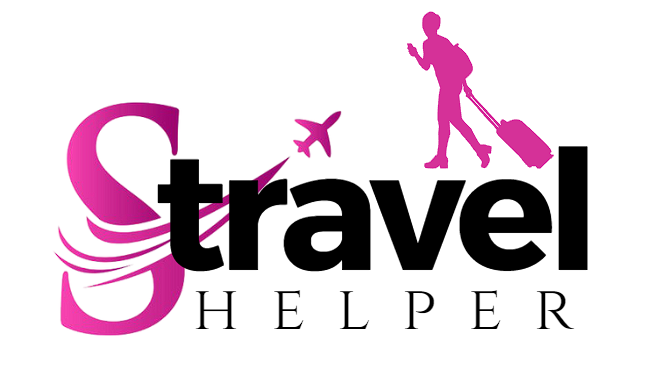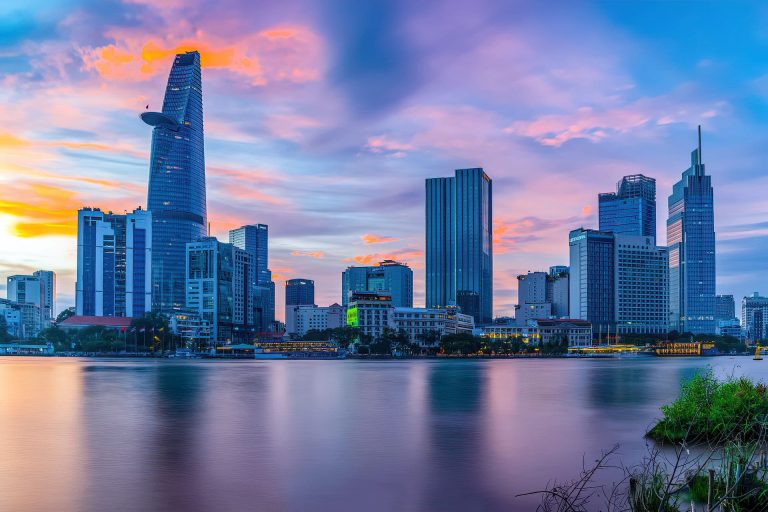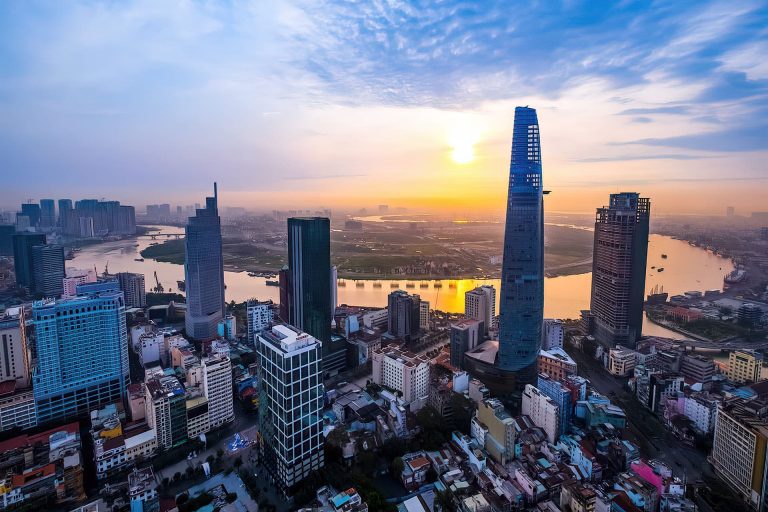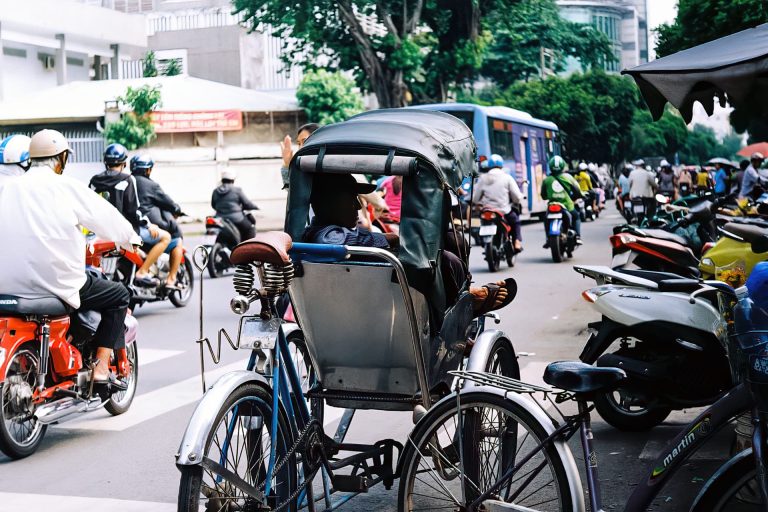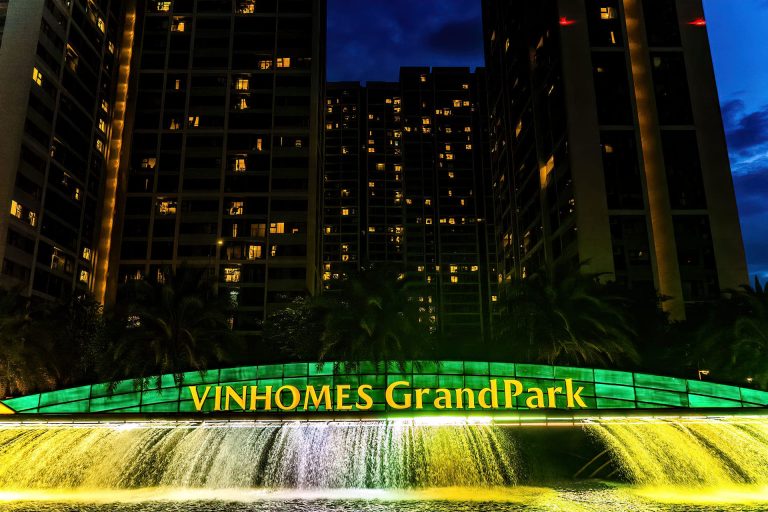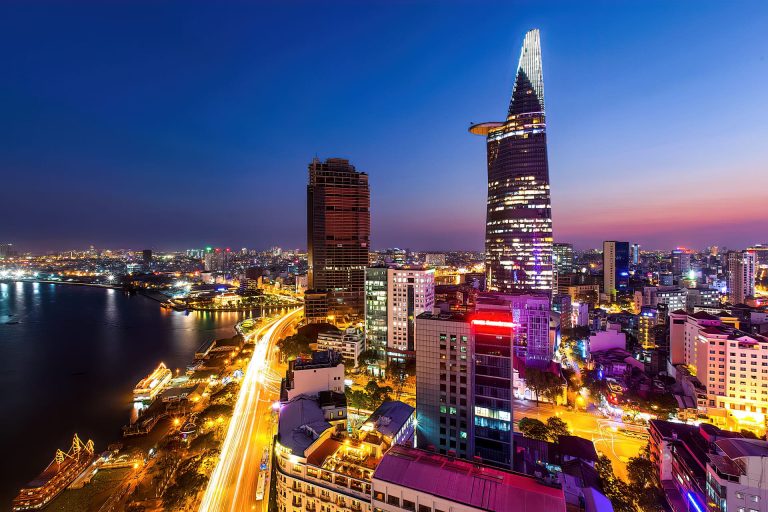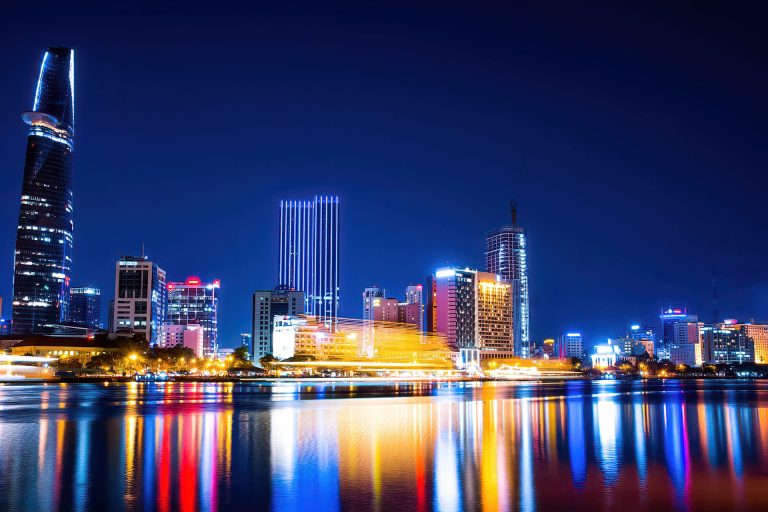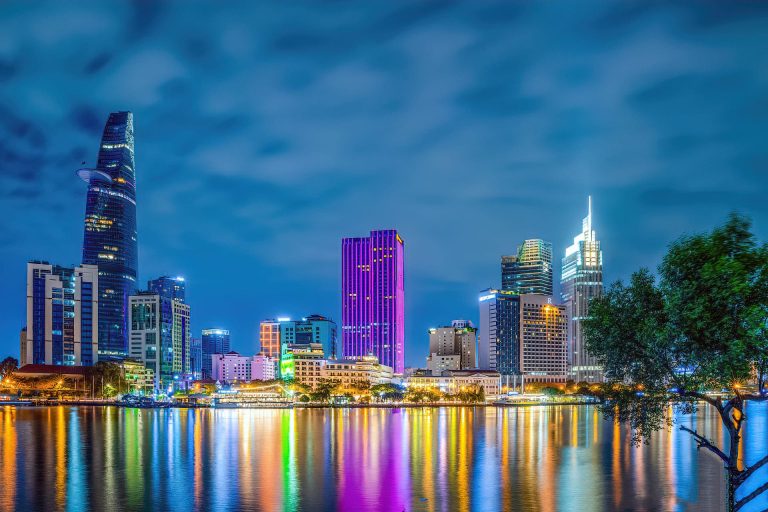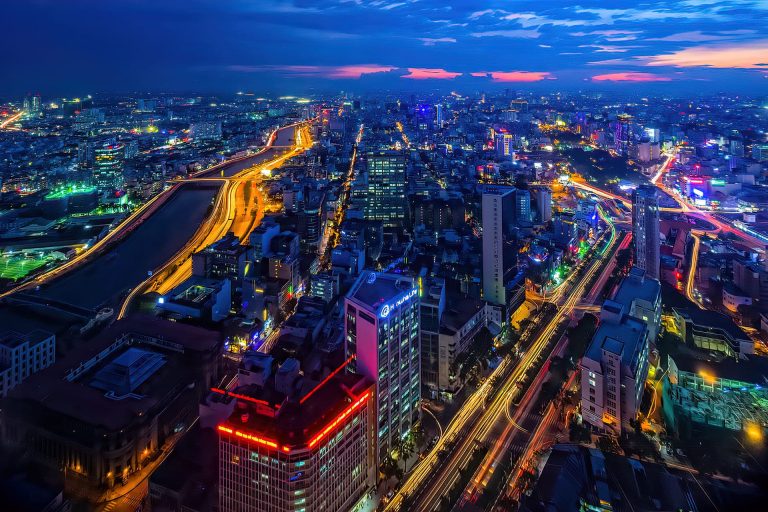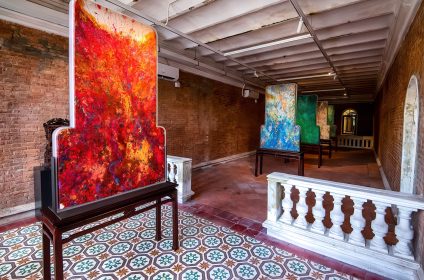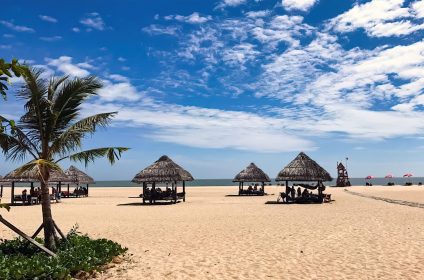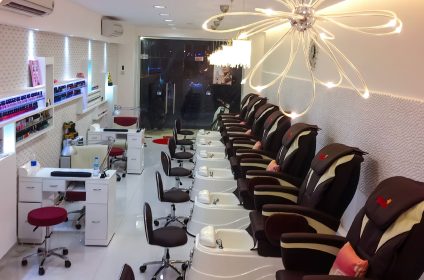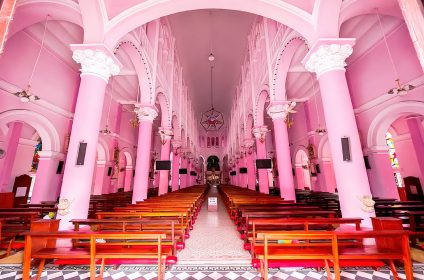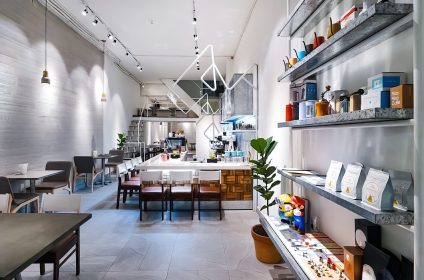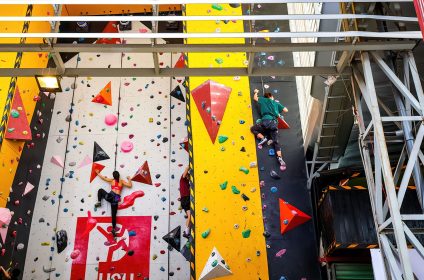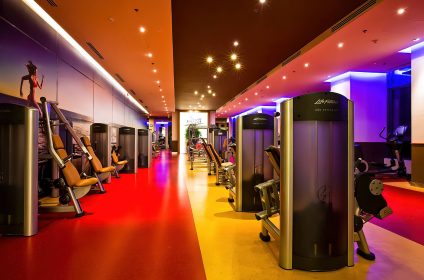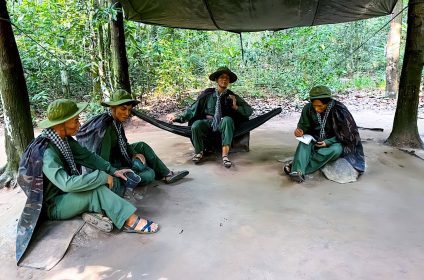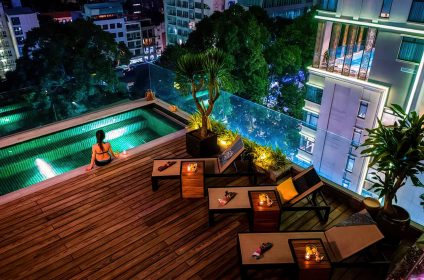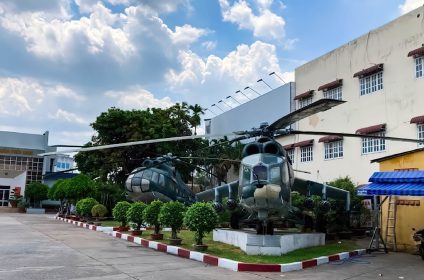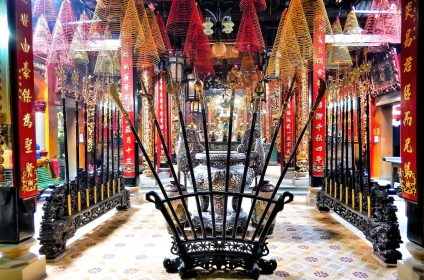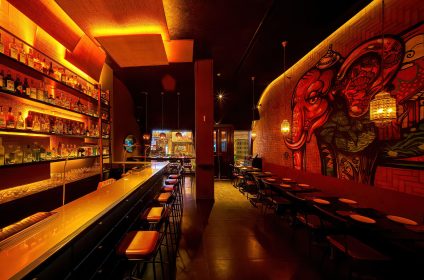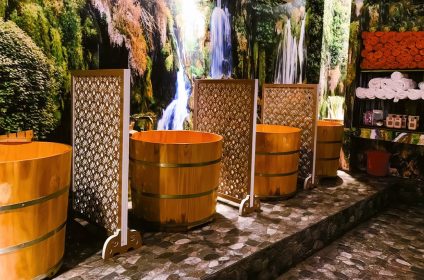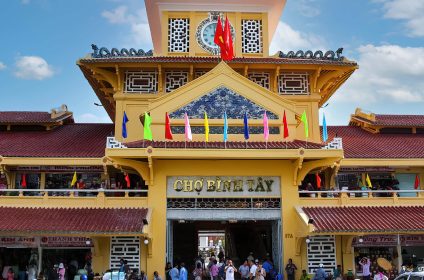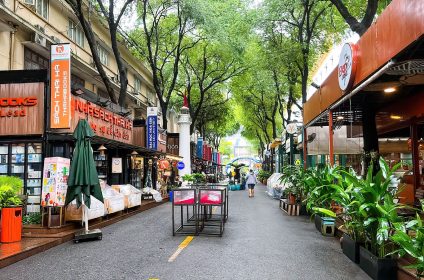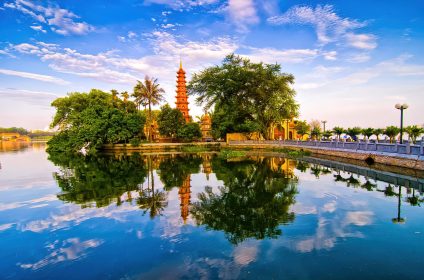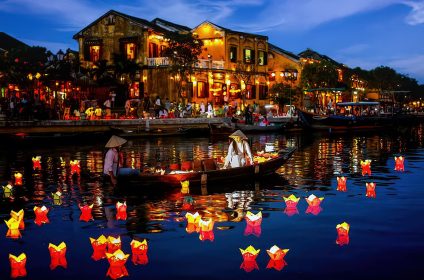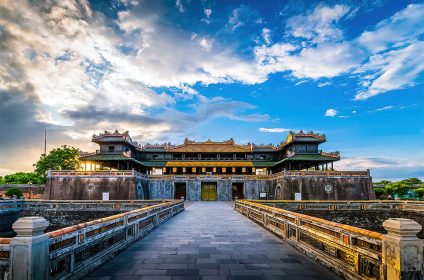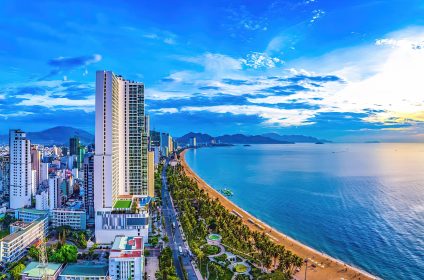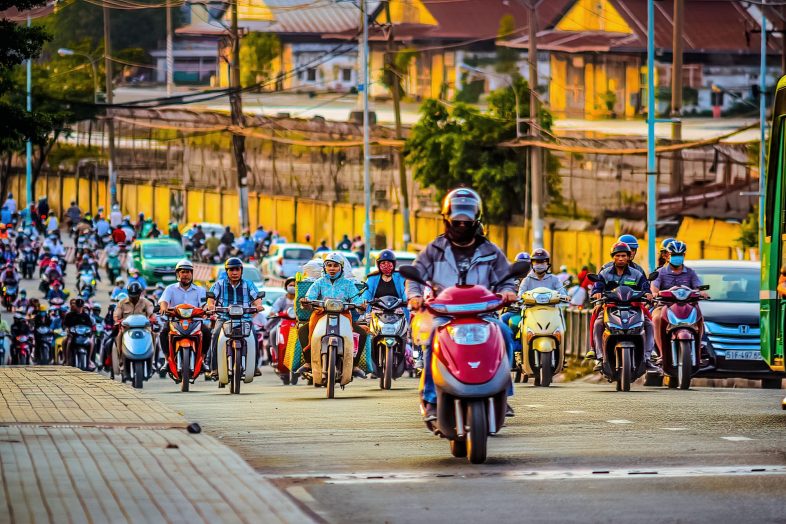
How To Travel Around Ho Chi Minh City
Get Around - By taxi and rental car
Taxis are the most convenient means of transportation, and they are inexpensive when compared to other major cities throughout the globe. Prices change over time based on the price of fuel. Per mile, budget between 15,000 and 20,000 dong. Taxis are plentiful, and it’s normally easy to flag one down anyplace in the city center from early in the morning until around 1:00, however it can be challenging to find one in the rain or during peak business hours.
Since the city government does not regulate taxi prices, each firm establishes its own fare schedule that occasionally fluctuates. You can’t just pick a taxi at random and expect to pay the going rate; it’s a caveat emptor market with some shady drivers who overcharge tourists. Fortunately, the market is fairly competitive, and 80% of the cabs are run by companies that are reasonably trustworthy and have comparable prices. These businesses’ markets are more than 90% local, hence their policies are made to gain the confidence of people living in HCMC. In general, Mai Linh and Vinasun are the only taxi companies you should utilize as the likelihood of being taken advantage of is significantly higher with the other firms.
Dishonest cabbies may begin driving without activating their meters, then demand a high rate or attempt to bargain for a set price at a spot where it is challenging for you to hail another cab. Therefore, before you get in the cab, be sure the driver switches on the meter and agrees to use it. As was already noted, several taxi firms, including Mai Linh and Vinasun, have meters in their cars that turn on as the car starts moving.
It is advisable to write down your destination’s name and address, preferably in Vietnamese, to show the taxi driver since most drivers do not speak any other languages save limited English. The hotel personnel can help. Carrying a business card from your hotel can also make it easier to get back there later on. Since drivers frequently run out of change, always have small bills and coins on hand for payment of fares. The majority of taxis are low-cost, Vietnam-assembled Toyota Vios sedans (up to four passengers) and Toyota Innova minivans (up to six passengers). No of the make or model of the vehicle, the fare is virtually always the same, however anything larger than an Innova typically costs extra. Some vintage automobiles may not have functional air conditioning.
When given the opportunity, taxi drivers frequently drive excessively quickly. In Ho Chi Minh City, the outside or right lanes are set aside for motorbikes, while vehicles and buses utilize the center lanes on two-way streets or the left lanes on one-way streets. The motorbike lanes move a little bit faster during weekday rush hours while the car lanes frequently move very little for blocks at a time. The propensity of taxi drivers to merge into the motorcycle lane and overtake other vehicles varies. Theoretically, they may be penalized for doing this. The city’s rush-hour congestion has gotten so severe that you might want to just avoid going anywhere between 7:00 and 8:30 and 16:00 and 18:00.
Hiring a car with a driver for the day is an excellent choice for excursions outside of the city or for the convenience of having a private vehicle for the day. These services are provided by numerous taxi firms, including Mai Linh and Vinasun.
Get Around - By speedboat
After a boat sank on January 21, 2015, hydrofoil service to Vung Tau has been discontinued indefinitely. Price if service resumes: USD10 per adult ticket and USD5 per child (age 6-11, height under 1.4 m). Length: 75 minutes Departs from Bach Dang pier in District 1 in Saigon, next to the Majestic hotel (100 m). Arrives in Cầu Đá Port, Ben Cau Da, Ha Long St, Vung Tau.
This route is served by three lines (Petro Express, Greenlines, and Vina Express) with the same $10 one-way fare. If you intend to visit Vung Tao, you should consult a Vietnamese calendar. Tickets frequently sell out around holidays.
Get Around - By motorbike
Motorbike taxis (xe ôm, literally hug-vehicle) are abundant (you’ll hear “you want moto?” everywhere), inexpensive, and typically safe. Helmets are now mandatory for all motorcyclists, and this law is strictly enforced. Ensure that the driver provides a helmet. If he does not comply, you will be responsible for paying the fee.
Before departing, agree on a price. Short trips within the city should not cost more than 20,000 dong, while a trip to the airport should cost approximately 70,000 dong. The majority of drivers are friendly and will slow down upon request. Additionally, they are not averse to a bear hug if you’re fighting to hang onto the motorcycle. If you make an attempt to get to know them, many of the moto drivers, especially in District 1, speak some English and, like most Vietnamese, will reward you with a flood of smiles and possibly point out all the attractions.
Numerous locations provide motorbike rentals, especially in District 1’s backpacker district (Pham Ngu Lao). You should be able to purchase a nice 100-110cc bike for 110,000 dong. Scooters with automatic transmissions and four-speed motorcycles whose gears are changed with the left foot are the two primary types of motorcycles available for rental. The ubiquitous Honda Super Cub is a 4-speed motorcycle with a semi-automatic gearbox, i.e. no clutch, and is therefore reasonably simple to use. Other types may be totally manual, requiring you to use your left hand to handle the clutch. It is all too simple to over-rev and perform a wheelie or stall the engine, which requires some skill. If you end up with such a motorcycle, you should practice gently releasing the clutch before hitting the road. On the (reasonable) premise that they do not know how to operate a motorcycle with a manual transmission, rental operators typically direct foreigners toward scooters if available. The only way to legally ride a motorcycle with a displacement of 175 cc or more is by joining a Vietnamese motorcycle club.
Driving in Saigon is best left to those with extensive experience. The traffic is fierce and has its own logic and patterns. However, if you’re up for an adventure, it’s important to keep a few things in mind: drivers with limited experience should consider renting an automatic bike (which is typically a bit more expensive), as at busy intersections it’s not the time to worry about shifting gears. Beware of thieves: your motorcycle should always be visible or parked with an attendant. The majority of restaurants have guards or parking employees at the entrance who will issue you a numbered parking tag and watch over your motorcycle. Independent parking lots are dispersed across the city’s streets, alleys, and basements. Look for neatly parked rows of motorcycles or signs that say giu xe.
If you are here during the rainy season, purchase a poncho or raincoat before beginning. They can be purchased for as low as 10,000 dong. During July and August, it rains daily for 1–2 hours between 16:00 and 20:00 in Saigon. However, traffic continues and just becomes more chaotic. It may be smart to park and wait if you are unsure or have never driven in such conditions previously.
Long-distance riding in the countryside might be treacherous, depending on the route taken. Major routes between cities are typically narrow while being major, and filled with tour buses intent on speed, passing slow vehicles where they perhaps shouldn’t, and leaving little place for bikers.
The majority of desired locations have parking employees who will issue you a numbered tag and keep an eye on your bicycle. Occasionally these parking operations are handled by the establishment you are visiting, and sometimes they are independent businesses established in high-traffic locations. Typically, you will find rows of bicycles lined up and parked. Depending on the situation, you may park the bike yourself or simply place it in neutral and allow the personnel to position it. Almost always, you retain the key. Free parking is occasionally available at restaurants and cafes (look for “giu xe mien phi”). Other places charge between 2,000 and 5,000 dong.
According to conventional opinion, traffic police in cities pull over a large number of locals for unclear reasons, but they rarely stop foreigners due to the language barrier. Even if you have been unable to obtain a Vietnamese driver’s license, you should still obey the traffic laws. Numerous one-way streets exist in cities such Vietnam Ho Chi Minh City, and as there are few signs indicating their presence, it is all too simple to accidentally enter them. If you violate the law, the police will stop you and penalise you. Additionally, they will threaten to seize your bicycle. The amount quoted is negotiable, and apologizing and being cordial can get you back on the road soon with a few dollars less in your pockets. They will be less inclined to bully or bother you.
Get Around - By cyclo
A cyclo ride across HCMC is an excellent way to explore the city like the people do. Cyclos resemble a reversed tricycle, with the passenger(s) seated in front and the driver pedaling behind. The greatest way to appreciate the city’s sights, sounds, and fragrances is on a cyclo, which allows for a leisurely pace. A word of caution: while cyclo riding, be wary of your cameras, purses, and watches, as these are readily stolen by motorbike robbers.
This mode of transportation is declining for a variety of reasons, including the government’s emphasis on imposing restrictions on cyclos on urban streets. However, for approximately 36,000 dong per hour and given their sluggish pace, they are an excellent option for touring the city. Be sure to negotiate aggressively with the cyclo driver in advance. Some drivers have been known to attempt to alter the agreed-upon fare at the conclusion of a trip. Stopping uninvited at locations where the driver earns a commission is another deception. To avoid these issues, ensure that everyone is aware of the price and destination prior to departure.
Get Around - By bus
The city’s 150 public bus routes are served by buses that are bright green in color. In District 1, you may get bus system maps at the big Ben Thanh bus station across the street from Ben Thanh Market. Proceed to the desk in the center of the waiting room. The buses are inexpensive, secure, and seldom overcrowded. Many are contemporary and comfortable, featuring air conditioning, music, and even television. Finding the correct line can be difficult if you don’t speak Vietnamese, but with the assistance of maps and the hotel employees, you can quickly reach your destination. If you cannot find your route, ask the locals kindly for assistance; they will do their best to assist you. At the largest bus stops, each stop’s bus destination is displayed (useful, for example, if you need to get to Cholon).
The buses are quick and efficient. The majority of buses are staffed by a driver and conductor. The driver maintains forward momentum as the fare collector speaks with passengers. The locals assert, credibly, that buses are speedier than taxis. On the streets of HCMC, buses have an informal right of way; when another vehicle spots an approaching bus, it moves out of the way. Taxis are aware that they are expected to avoid confrontations with buses. A bus travel costs between 4,000 and 8,000 dong and is safer than the majority of options. The greatest difficulty is that, when exiting the bus, one becomes a pedestrian.
Those who are not staying in Ho Chi Minh City for an extended period of time or who wish to save time can use the Vietnam Transfer Service to visit the city’s most popular attractions. Price ranges from 15,000 and 75,000 dong, which includes the tour guide and English-language information.
Get Around - On foot
Traffic consists of an astonishing number of motorbikes and, since Vietnam’s WTO membership cut import duties, an increasing number of private cars. However, it is quite uncommon to see a motorcycle with a displacement more than 150 cc, and traffic speeds in urban areas rarely exceed 20–30 km/h.
In Saigon, crossing the street may be a nightmare. It’s always terrifying. If you are ever unsure, Saigon’s “Tourist Security” officials (men in green uniforms) would gladly assist you. Simply following the lead of a local who is crossing the street is a faster method of crossing.
The key trick to crossing the street is to be vigilant and to move slowly and with assurance. The motorcyclists are highly skilled and will simply avoid you; just avoid making quick, uncontrolled movements. Look for a space or seam in the traffic, and then move slowly but steadily. If you hear an approaching beep, it is likely that a motorcyclist is about to enter your personal space. Be vigilant and prepared to stop advancing until he has passed.
Saigon’s traffic lights are poorly observed. Drivers tend to use “best judgment”. However, note that automobiles can turn right at any time (regardless of lights). Motorcycles frequently travel in the wrong way to take a shorter route from point A to point B, even against the flow of traffic. Westerners accustomed to traffic laws and traffic signals may have difficulty crossing roads.
The traffic police are preoccupied with random roadside checks and do not bother motorcyclists who run red lights or drive on sidewalks. Recently, the police announced a crackdown on pedestrians. This does not imply they will bother you. The most likely interpretation of the crackdown is that you will be held accountable for any accidents you cause.
Maps
As you leave Tan Son Nhat Airport, Vietnamese women wearing the traditional ao dai attire will hand you a free VN Trip Map. The majority of hotels provide complimentary tourist maps of District 1, although these maps tend to emphasize advertising. The Sheraton has one of the greatest and will supply one upon request at the front desk. Bookazine at #28 Dong Khoi (between Ngo Duc Ke and Ho Huan Nghiep) in District 1 has larger city maps if you intend to travel outside District 1. On the back of the edition produced by Du Lich and Giao Thong is a street index. Fahasa Books also sells an extensive selection of maps. They have two huge stores in District 1: 185 Dong Khoi, near Le Thanh Ton, and 40 Nguyen Hue, near Mac Thi Buoi. MySherpa Travel has also created tourist maps of District 1’s center area with all stores and attractions listed. Hotels and shops such as Gaya, Dolce Casa, Annam Fine Foods, T&V Tailor, and Galley Deli are located in Saigon.

